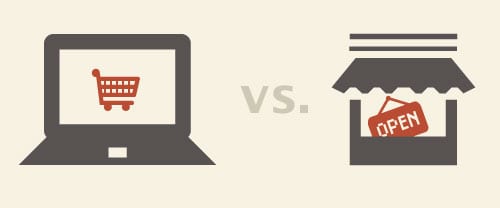We should thank Amazon for the burgeoning showrooming epidemic. I expect that this might not be the most popular sentiment, but I honestly believe retail is due for a major overhaul.
Showrooming happens when consumers go to a store, look at a product,
and then buy it cheaper online.

I’ll offer up four reasons why showrooming is good for retail.
1. Retailers Should Focus On Solutions, Not Just Stuff.
Simply put, retailers need to work harder. Let’s take the basic pillow. For most, the pillow buying experience doesn’t take much thought. Hard, soft, flat, king, queen…that is, unless it’s a pillow that improves sleep and adjusts to an individual’s sleep habits.
That’s precisely the promise of the Sleep Number Air Fit pillow. And for $229 a pop, you’ll have to ask yourself: is the price of comfort and the promise that you can dial up or down comfort levels worth it? Solutions sell, whereas simply selling ‘stuff’ is the underlying symptom of showrooming.
So, focus on smart solutions, whether it’s unique, ownable product like The Shops at Target, or take a cue from outdoor retailer REI where, if at any time, a purchase doesn’t meet your expectations, you can return it for a replacement or refund. Don’t give reason to pull out a bar scanner app and search for a lower-priced alternative on Amazon.
2. Make It Easy For Me.
Central to the college freshman experience is shopping, specifically decking out the dorm room. While Amazon might play a part in the textbook experience, Bed Bath and Beyond leads the Back-to-Campus experience. Notice I say ‘experience.’
Head to your local Bed Bath & Beyond to order your sheets, towels, shelf organizers, and then pick up your items at the local Bath & Beyond closest to your campus. Simple and convenient, giving Bed Bath & Beyond a leg up on Wal*Mart and Target.
The next step would be free delivery door to door and in-store smartphone scanning to manage your experience, similar to how the Crate & Barrel Gift Registry App has evolved the wedding registry experience. So, think about making it easy, but also combining ‘omni-channel’ solutions that connect online, mobile, and in-store to deliver a better customer experience.
3. You Had Me At Hello.
Many purchases require research, thought, time, and education. Whether you’re buying a bike or a refrigerator, there are endless options. I recently purchased both and spent countless hours researching options, reading reviews, and ultimately purchasing in a store vs. online.
The allure of using the store as a ‘showroom’ to touch, feel, test –and then buy online — was a consideration, but buying in a physical store won out. The personal experience was the tie-breaker.
Take the bike experience: I wavered and wondered if I could save money by purchasing online on eBay, craigslist, or online bicycle shops. In the end, expertise and experience won out.
Kozy offered a no-questions, 15-day money back guarantee, test rides, free tune-ups, and free accessories installation. Thus, whether you’re a local bike shop or a national retailer, the short-sighted view could be that these options cut into profit, but simple consumer-focused solutions like these are precisely what can stave off showrooming, drive loyalty, and increase profit.
4. Customize Me.
The old “buy low, sell high” model of retailing is gone. Upstarts like Warby Parker have figured out that they can provide just as good level of product and, some might say, a better experience for less than $100.
What does this have to do with showrooming?
Think about how online or mobile can drive in-store or how in-store can tap into mobile and technology. According to a recent study, 33 percent of consumers have admitted to comparison shopping on a competitor’s website while in another retailer’s store. This finding demonstrates that while retailers today should consider “showrooming” consumers, there’s also an opportunity to help shoppers feel good about their purchases while in-store.
From Converse offering in-store shoe customization to Nordstrom shipping out-of-stock product to your home for free, both offer a ‘customized’ experience that builds a deeper relationship. We‘ve learned at edo that it can be as simple as sending a personalized and relevant offer based on prior spending behavior to drive in-store purchase. In the end, it’s about how you personalize an experience so that it feels exclusive, special, and creates a stir where others will spread the word.
The Bottom Line
Competition across online and offline retail is so fierce, and customers are a lot less forgiving. To have any chance to survive, let alone flourish, in the age of showrooming, ‘poke the box’ and stay true to these four tenants:
- Focus on solutions, not just ‘stuff,’ because tired will lose.
- Make it easy & omni-channel.
- Experience adds to the bottom line.
- Custom is attainable.
What are your thoughts? Please share your comments in the box below.




